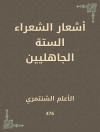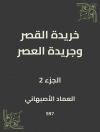FOR children who grew up in France before the Second World War, memorizing the fables of the 17th century poet Jean de La Fontaine was a ritual as familiar as daily snacks of bread and bitter chocolate, placing bulletins under the tree for Santa’s reading, or at the search for the little white china that Jesus buried in our cake Epiphany on the sixth day of the new year. Had the praise of a peer or teacher gone to our heads? The fable of the Fox and the Raven is born: the Fox, hungry for the cheese held in the Raven’s beak, flatters the bird by trying to prove that its song is as dazzling as its plumage (rarage), and collects the delicious prize when the crow opens its beak to sing. Do we have too much confidence in appearances, our own and those of others? One of La Fontaine’s many antidotes to this weakness is his tale of The Lion and the Gnat: the king of beasts arrogantly declares war on a humble insect, and is quickly defeated and slaughtered by the pernicious stings of the pipsqueak. Georges Ballin The Most Fabulous Fables fables of the 17 Th Century
« Tome I »
On textx from La Fontaine
POUR les enfants qui ont grandi en France avant la Seconde Guerre mondiale, mémoriser les fables du poète du XVIIe si Jean de La Fontaine était un rituel aussi familier que les collations quotidiennes de pain et de chocolat amer, le placement des bulletins sous le sapin pour la lecture du Père Noël, ou à la recherche de la petite porcelaine blanche que Jésus a enterrée dans notre gâteau de l’Épiphanie le sixième jour de la nouvelle année. Les éloges d’un pair ou d’un enseignant nous étaient-ils montés à la tête ? La fable du Renard et du Corbeau est née : le Renard, affamé du fromage tenu dans la bec du Corbeau, flatte l’oiseau en essayant de prouver que son chant est aussi éblouissant que son plumage (ramage), et récupère le délicieux prix lorsque le corbeau ouvre son bec pour chanter.Avons-nous trop confiance dans les apparences, les nôtres et celles des autres ? L’un des nombreux antidotes de La Fontaine cette faiblesse est son conte du Lion et du Moucheron : le roi des bêtes déclare avec arrogance la guerre à un humble insecte, et est rapidement vaincu et massacré par les piqûres pernicieuses du pipsqueak.
Georges Ballin
The Most Fabulous fables of the 17 Th Century « Tome I »
Textes de La fontaine
Circa l’autore
Jean de La Fontaine, baptized on July 8, 1621 in the Saint-Crépin-hors-les-murs church in Château-Thierry and died on April 13, 1695 in Paris, is a man of letters of the Great Century and one of the main representatives of French classicism. In addition to his Fables and Contes libertines, which established his fame in the 1660s, we owe him various poems, plays and opera librettos which confirm his ambition as a moralist.












